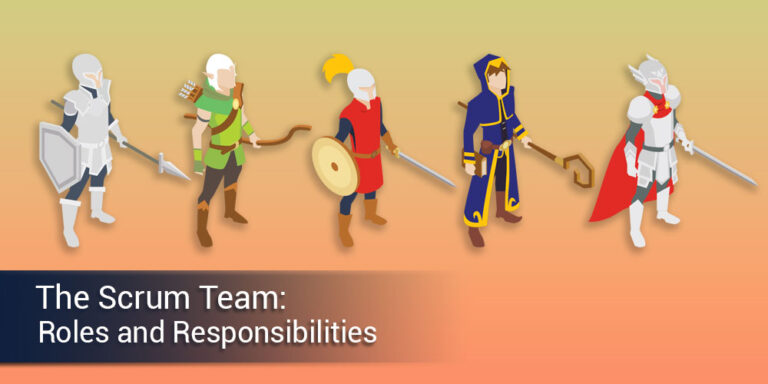The Agile Manifesto was originally created to fix the gaps caused by document-driven, time-consuming software development processes like the waterfall approach. Agile Project Management (APM) segregates projects into small tasks that need to be completed in specific work sessions. These sessions, called sprints, start from the design phase and run till the testing and quality assurance (QA) phase in completing a project. These sprints are used in a specific, renowned Agile development method called Scrum.
Scrum is one of the most popular process frameworks for executing agile project management. When an organization starts applying scrum, one of the key considerations to keep in check is how Scrum roles differ from conventional project implementation roles.
There are three vital roles to consider in forming a Scrum Team; each with their own unique function and set of responsibilities:
1. Product Owner – The Champion of the Product
The Scrum Product Owner sets the idea of the product, describes what he or she wants to build, and conveys this vision to the team. The product owner focuses on the business as well as market requirements and then prioritizes the work to be done by the engineering team. The product owner must be the face of everything that interests the project team, acting as an expert guide for the team to carry out the project effectively.
A Smart Product Owner:
- Consolidates and manages the product backlog
- Works in sync with the business objectives as well as the team to make sure that everyone understands the work items in the product backlog
- Gives a clear guidance to the product team on what has to be delivered
- Reviews and re-prioritizes outstanding work based on shifting needs and ongoing feedback in an agile setup
Note that a product owner is not the project manager and do not handle the status of the project. Their prime focus is to ensure that the development team delivers most value to the business. Also, it’s ideal to have only one product owner to avoid mixed guidance from multiple product owners.
2. Scrum Master – The Team Protector
The Scrum Master is the coach of the team who not only directs the team to achieve the project objectives but also guides the product owner and the business on the scrum process. As the facilitator-in-chief, scrum masters choose the needed resources (both human and logistical) for sprint planning, stand-up, sprint review, and the sprint retrospective.
A Clever Scrum Master:
- Helps the team optimize its delivery flow to deliver the project successfully
- Resolves impediments and distractions faced by the development team, protecting them and resolving issues like halting the product owner from overstepping to avoid re-prioritizing the set project scope for the team
- Expert on how Scrum works and how it should be applied. He or she will ensure that the product owner and development team stick to the Scrum framework
- Guides the other team members new to Scrum on how to use it in the most effective manner
Remember that the Scrum master’s role is different from the traditional project manager. Project managers are responsible to manage the work of the project team and this impacts their daily work. However, the Scrum Master’s formal responsibility is to oversee the entire project process and assist the team towards meeting the set project objectives and overall scope.
3. Scrum Development Team – Autonomous Pool of People
It is the Scrum Development Team that is accountable for the people doing the work in a project. Typically, this team consists of five to nine individuals, each performing a functional role of an expert to complete the project. In software development, these people can be architects, testers, developers, and designers, but these titles can vary since they only establish a person’s expertise relevant to the specific project.
The Most Effective Scrum Teams:
- Are tight-knit and cross functional. Team members cross-train each other so that nobody becomes a hindrance to deliver the work on the decided time
- Drive the plan for each sprint to forecast how much work they believe they can complete over the decided timeline
- Work collectively to determine how to achieve the project goals and follow the scrum process set by the scrum master
The conclusion?
Agile Scrum certifications, training and workshops are abundant and easy to attain but if the members are not aware of their unique roles and responsibilities, it would not warrant the development team’s survival in an Agile Environment. With enough practice, the team will soon discover the absolute business value of Agile Adoption over traditional methods.


